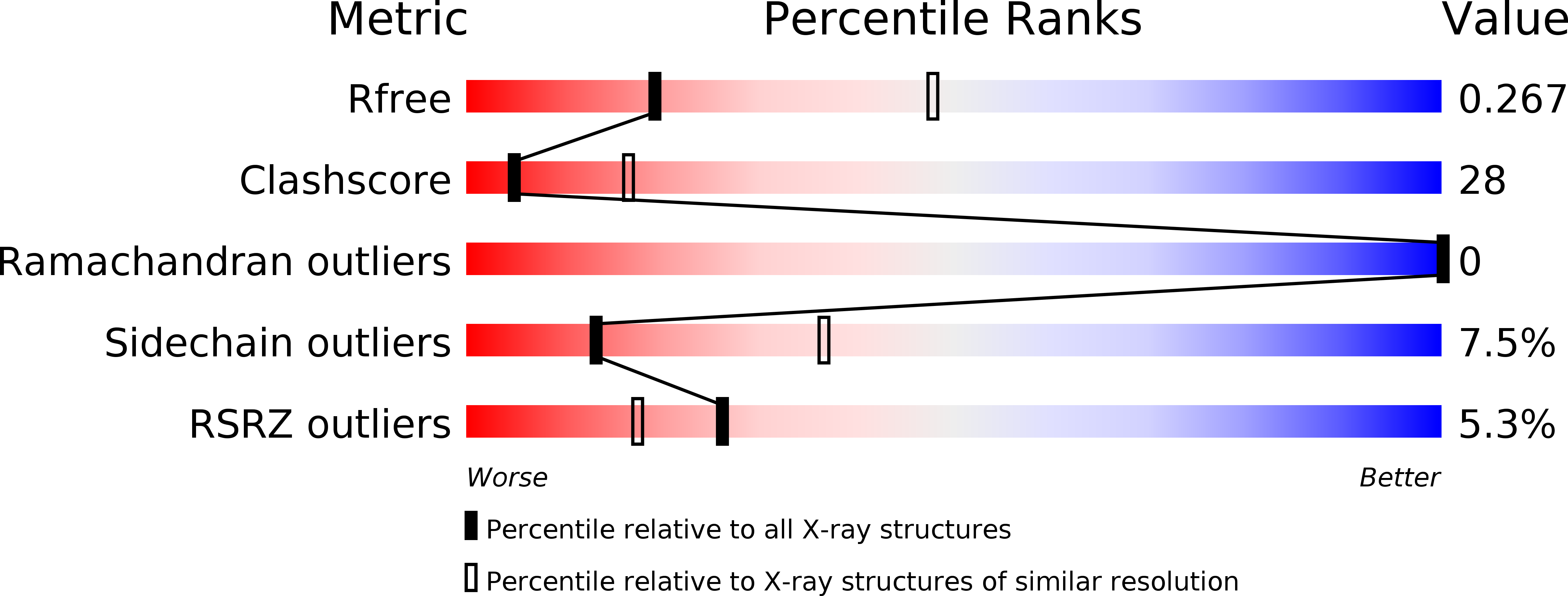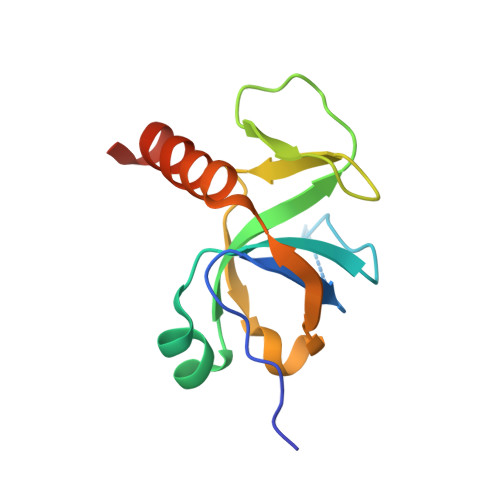Substrate Recognition and Activity Regulation of the Escherichia coli mRNA Endonuclease MazF.
Zorzini, V., Mernik, A., Lah, J., Sterckx, Y.G., De Jonge, N., Garcia-Pino, A., De Greve, H., Versees, W., Loris, R.(2016) J Biol Chem 291: 10950-10960
- PubMed: 27026704
- DOI: https://doi.org/10.1074/jbc.M116.715912
- Primary Citation of Related Structures:
5CK9, 5CKB, 5CKD, 5CKE, 5CKF, 5CKH, 5CO7, 5CQX, 5CQY, 5CR2 - PubMed Abstract:
Escherichia coli MazF (EcMazF) is the archetype of a large family of ribonucleases involved in bacterial stress response. The crystal structure of EcMazF in complex with a 7-nucleotide substrate mimic explains the relaxed substrate specificity of the E. coli enzyme relative to its Bacillus subtilis counterpart and provides a framework for rationalizing specificity in this enzyme family. In contrast to a conserved mode of substrate recognition and a conserved active site, regulation of enzymatic activity by the antitoxin EcMazE diverges from its B. subtilis homolog. Central in this regulation is an EcMazE-induced double conformational change as follows: a rearrangement of a crucial active site loop and a relative rotation of the two monomers in the EcMazF dimer. Both are induced by the C-terminal residues Asp-78-Trp-82 of EcMazE, which are also responsible for strong negative cooperativity in EcMazE-EcMazF binding. This situation shows unexpected parallels to the regulation of the F-plasmid CcdB activity by CcdA and further supports a common ancestor despite the different activities of the MazF and CcdB toxins. In addition, we pinpoint the origin of the lack of activity of the E24A point mutant of EcMazF in its inability to support the substrate binding-competent conformation of EcMazF.
Organizational Affiliation:
From the Structural Biology Brussels, Department of Biotechnology, Vrije Universiteit Brussel, Pleinlaan 2, B-1050 Brussels, Belgium, the Structural Biology Research Center, VIB, Pleinlaan 2, B-1050 Brussels, Belgium.














